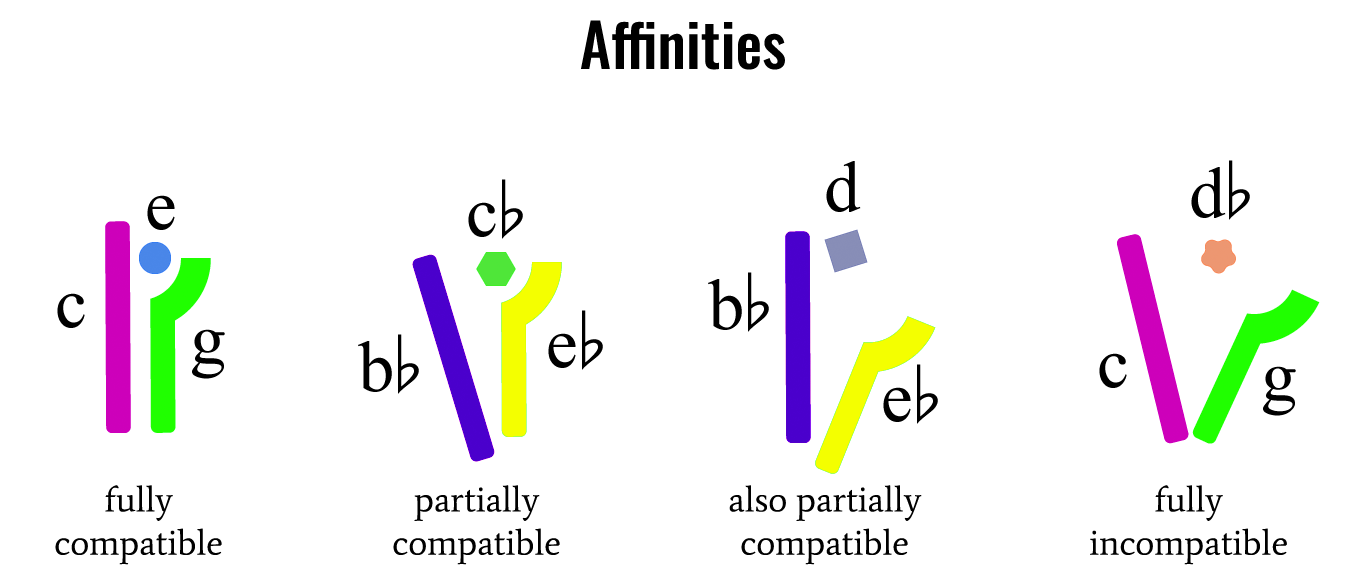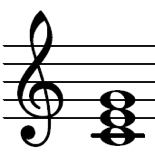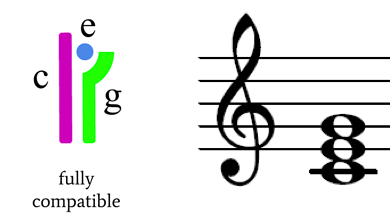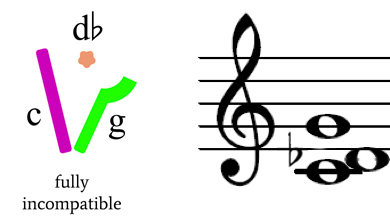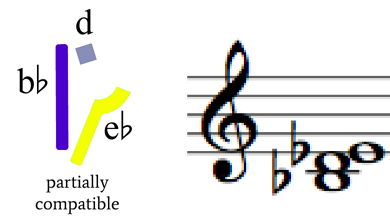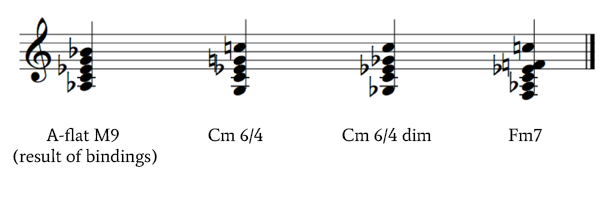2. What are Consonance and Dissonance?
A ligand may only be compatible with one of the two receptor parts, while the other part remains incompatible with the ligand.
- In music, the relationship between two tones (an interval) is either consonant or dissonant.
- Like ligands binding with cell receptors, they refer to the differing levels of compatibility between any two tones.
When an interval is consonant, it has a pleasant, “finished” sounding quality.
When an interval is dissonant, it sounds uglier,
as though it needs to be “resolved” to something
consonant.
3. Using Intervals to Represent Ligand Bindings
We use two tones (an interval) to represent the two parts of the cell receptor, and a seperate single tone to represent a ligand.
The ligand tone will match the continuous rhythm of the receptor tones to represent a binding. Other ligand tones will be present, but will not attempt to bind to the receptor- they are playing separate, erratic rhythms.
6. Intervals: A major 3rd plus a minor 2nd
To represent a partially compatible binding, we used a **perfect 4th** interval (simply 4 notes apart instead of 5, as used previously) to represent the cell receptor.
The two tones are B-flat and E-flat. There are two examples of partially compatible bindings. First, we inserted a D between the tones- this is consonant with one of the two receptor notes (the B-flat, producing a major 3rd) and dissonant with the other (the E-flat, producing a minor 2nd).
7. Intervals Used: major 3rd + minor 2nd
For the second example of a partially compatible binding, we inserted a different note between the same B-flat and E-flat.
This new note, a C-flat, is consonant with the E-flat (producing a major 3rd) but dissonant with the B-flat (producing a minor 2nd.) The consonant and dissonant intervals are the same in each partially compatible binding, but the compatible receptor has changed.
8. What Purpose Does a Ligand Binding Serve?
When multiple ligands bind to a cell’s receptors at the same time, they can bring about behavioral changes in the cell.
We chose to show this with a pair of bindings, represented by chords, evolving into a chord progression (then, a full piece of music!) If a ligand is incompatible or only partially compatible with a certain receptor pair, the cell’s behavior will be unaffected. Thus, a cell will change the nature of its receptors to match the ligand attempting to bind. This is represented by the receptor tones changing to become consonant with the original ligand tone.
9. Steps Toward Music
- Receptor 1: Fully compatible binding (consonant intervals)
- Receptor 2: Incompatible binding (dissonant intervals)
Receptor 2 changes its two tones to become consonant with the original ligand tone which attempted to bind to it. Once multiple receptors have achieved full compatibility, a larger and more complex consonant chord is achieved, which gives way to an improvisation- something spontaneous, just as a cell may spontaneously be able to change its behavioral abilities.
14. Example V part I:
Multiple Receptors and Ligands Binding at Once
Receptor I: Compatible Binding

Receptor II: Incompatible Binding which becomes compatible


